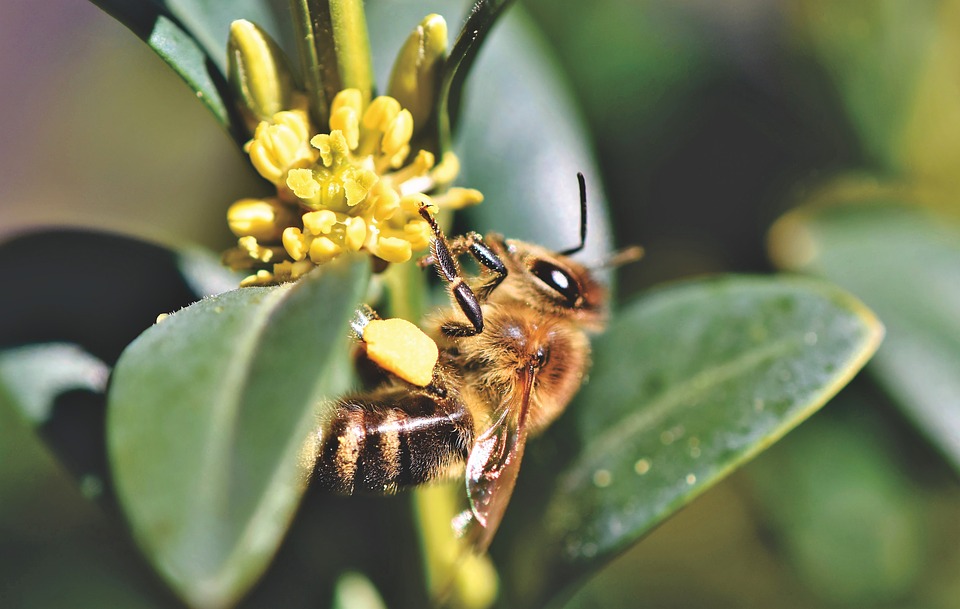27
Aug
EPA Sued for Registering Known Bee-Killing Pesticide for Use on Bee-Attractive Crops

(Beyond Pesticides, August 27, 2019) The U.S. Environmental Protection Agency (EPA) is the subject to a new legal challenge from environmental groups after approving the use an insecticide shown to be highly toxic to bees and other pollinators. The lawsuit, filed in the 9th Circuit Court of Appeals by the Center for Biological Diversity and Center for Food Safety, aims to stop the use of sulfoxaflor on more than 200 million acres of crops. As EPA under the Trump administration has become increasingly emboldened to fight for industry priorities, concerned organizations and people are responding by supporting legal challenges and working to pass policies that truly protect wildlife and the environment.
According to EPA’s ecological risk assessment for sulfoxaflor, the chemical is “very highly toxic” to bees. A study published last year in the journal Nature found significant concerns with the chemical’s ability to harm already declining pollinator populations. “There is an urgent need to pre-emptively evaluate the potential sub-lethal effects of sulfoximine-based pesticides on pollinators, because such effects are rarely detected by standard ecotoxicological assessments, but can have major impacts at larger ecological scales,” the authors wrote.
EPA had already run in to legal problems associated with its registration of sulfoxaflor. In 2013, the agency was sued by beekeepers who argued that EPA violated federal law and its own regulations by approving the chemical without reliable studies on the impact to pollinators. A federal court agreed with beekeeping groups, and revoked EPA’s full registration of the chemical. But the agency quickly turned around and registered sulfoxaflor for uses on crops that it says are not attractive to pollinators.
The agency regularly permits use on pollinator-attractive crops under the “emergency” exemption loophole in federal pesticide law. Most recently, the agency used this loophole during Pollinator Week 2019, despite a recent report from the Office of Inspector General chastising the agency for its abuse of this provision.
Despite the agency’s history with this concerning chemical, EPA nonetheless decided to again go to bat for industry and fully register the chemical for all uses, including on crops foraged by pollinators. “Proposing to register sulfoxaflor for use on bee-attractive crops, in the midst of an ongoing pollinator crisis, is the height of irresponsibility,” Drew Toher, community resource and policy director for Beyond Pesticides told Bloomberg Environment. “When all of the available data points to significant risks to pollinators from use of this chemical we must face the facts: EPA is working towards the protection of pesticide industry, not the environment,” he said.
The lawsuit by environmental groups challenges EPA’s rejection of the peer-reviewed Nature paper in favor of industry-funded studies that are not peer-reviewed, and not available for public scrutiny. Not only is the agency working off of questionable data, it did not even require sufficiently investigate the impacts it already had knowledge of. At the request of industry, EPA waived the legal requirement for a full-field study of sulfoxaflor’s impacts on pollinators, saying it would “not add meaningful input to our conclusions,” and thus indicating that the approval was a foregone conclusion. Under EPA’s approval, the chemical can be aerially sprayed with no buffer zone, and applied before and during bloom periods when pollinators are most active.
With EPA failing to take even the most basic steps to protect declining pollinators, it is up to concerned residents to get active in their state and community and demand change. Work to pass policies that eliminate sulfoxaflor and a broad range of systemic pesticides by promoting organic land care. For help in organizing your community, reach out to Beyond Pesticides at [email protected] or 202-543-5450.
All unattributed positions and opinions in this piece are those of Beyond Pesticides.
Source: Center for Food Safety Press Release, Circuit Court Filing










